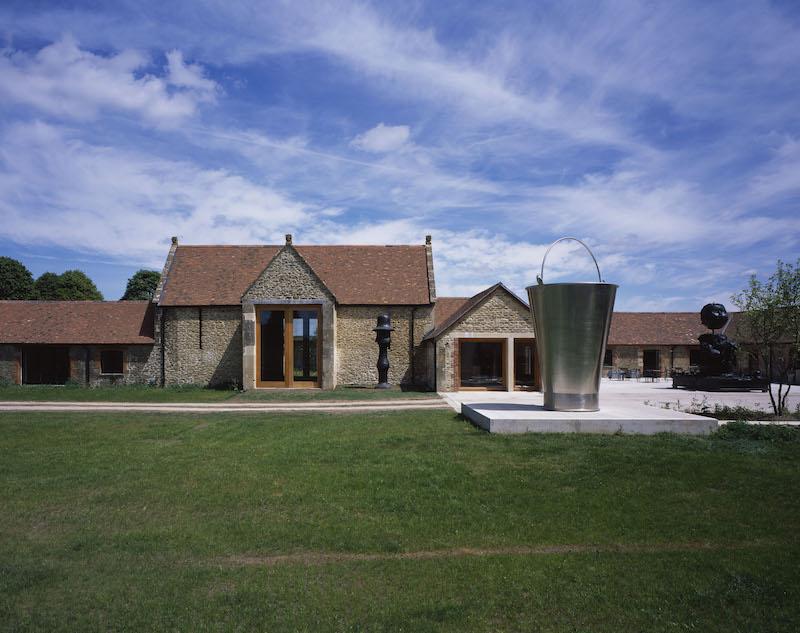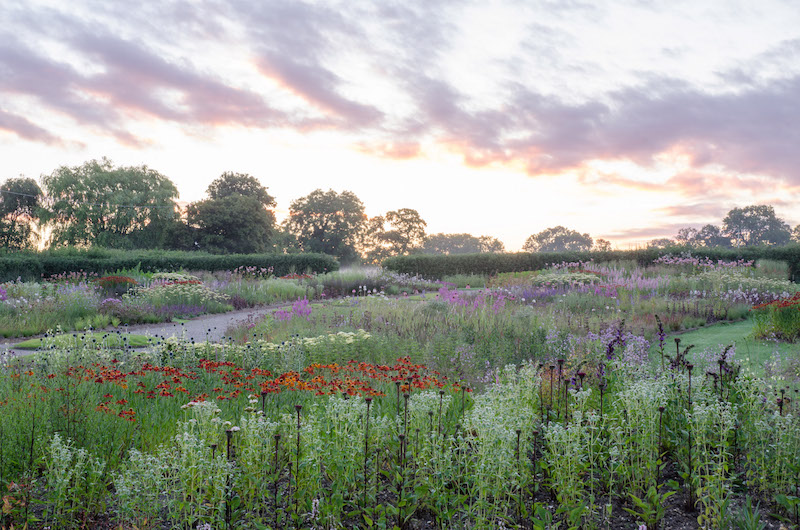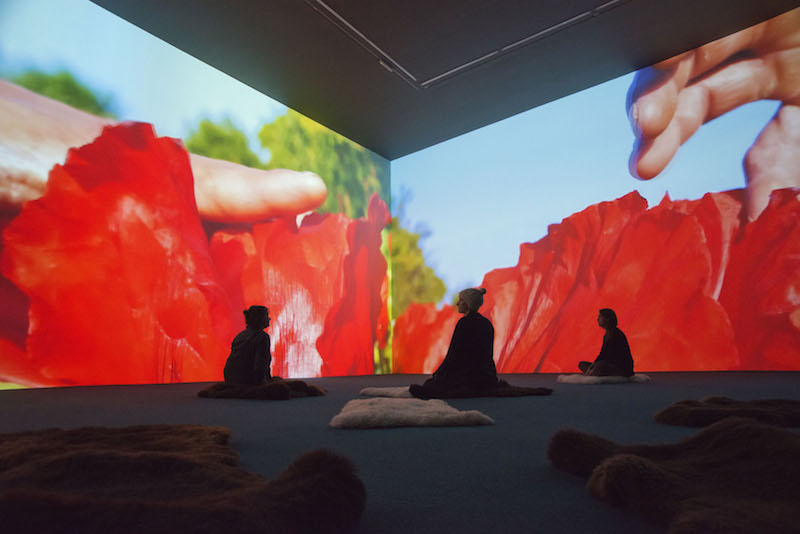We Made It: Hauser & Wirth Somerset | reviews, news & interviews
We Made It: Hauser & Wirth Somerset
We Made It: Hauser & Wirth Somerset
Gallery director Alice Workman on housing contemporary art in the threshing barn

Zurich, London, New York…Somerset. It may seem unlikely, but an 18th-century farm in the West Country is the new place to be for contemporary art aficionados. Last year, renovations were completed on the 10 buildings of Durslade Farm, left to fall into disrepair over decades.
MARIANKA SWAIN: What was the initial inspiration?
ALICE WORKMAN: Hauser & Wirth is an international gallery that originated in Zurich and has grown to include venues in London and New York. Owners Iwan and Manuela Wirth live in Somerset and have a very close connection with the community. They discovered Durslade Farm on the outskirts of Bruton and realised that its ruins and abandoned buildings would give them the opportunity to create a place where they could bring together all of their passions: art, architecture, landscape, conservation, gardening, food, education and community. (Roth Bar & Grill pictured below by Aaron Schuman)
 What were the biggest challenges in converting Durslade Farm?
What were the biggest challenges in converting Durslade Farm?
We initially thought about conceiving a new freestanding building, but combining the new buildings with the existing ones quickly appeared as the best solution. Intervening in the Grade II-listed agricultural cluster of buildings without overtaking or breaking the existing harmony was one of the major challenges of the project. Another was the weather, as we worked right through the wettest winter on record, when much of Somerset was submerged in water.
Is there a particular design ethos that connects the different elements on site?
Working closely with officers from English Heritage, we partnered with Paris-based architectural firm Laplace to envision a cohesive restoration. Two added wings, connecting with the Cow Sheds and Piggery, create a continuous internal space and an enclosed external courtyard lined with colonnaded canopies. The courtyard is large enough for each building to retain its own identity, while uniting old and new, and is also a site for displaying outdoor works of art.
What methods did the creative team use to realise your vision?
Conserving these beautiful buildings and breathing new life into them through an exciting programme of contemporary and modern art was at the core of our vision. We selected a creative team that we had complete faith in; Piet Oudolf, our garden designer (Oudolf Field pictured below by Heather Edwards), and Luis Laplace, our architect, were the cornerstones, and we gave them the freedom to create something innovative and unique. We’ve been delighted with the results.
 How important was it to retain Durslade’s character and heritage?
How important was it to retain Durslade’s character and heritage?
We made a conscious decision to conserve Durslade Farm, retaining the integrity of the existing buildings and remaining true to their historic usage, while also sensitively adding new gallery buildings to the site. The use of simple materials reflects the farm setting: brick, sympathetic to the existing sandstone and brick walls; pre-cast concrete lintels and jambs echoing the framing of doors and windows. The existing buildings retain all of their original features and the galleries are named after their former usage, e.g. the Threshing Barn.
Does that ever conflict with presenting contemporary, international work?
The galleries have all been designed to the highest specifications for exhibiting works, including large-scale sculpture, so we haven’t encountered any conflicts, and often the juxtaposition of contemporary art within a historical space is intriguing in itself. We’ve also been lucky in that many of the artists we’ve worked with have been excited at the prospect of creating site-specific works inspired by the location, including Phyllida Barlow, Zhang Enli and Pipilotti Rist. (Installation view of Rist’s 2014 'Stay Stamina Stay' pictured below)
What’s coming up?
In July, American artist Jenny Holzer will take over all five spaces for a major exhibition, which includes new site-specific work as well as a selection of significant pieces drawn from over three decades of her career. We have an exciting education programme running alongside it. In the autumn, we’re opening a programme focused on the South-West, with an exhibition of locally based artists called Qwaypurlake, alongside one by renowned photographer Don McCullin, who lives locally.
 What’s your dream for the venue? Would you like to see people coming for a variety of reasons?
What’s your dream for the venue? Would you like to see people coming for a variety of reasons?
People are already visiting for a variety of reasons. Seeing over 120,000 visitors of all ages, from all backgrounds, walking though the doors is our proudest achievement – we really feel we’re bringing contemporary art to new audiences.
What’s the local response been like?
Many of our visitors are local residents who come on a regular basis. We’ve been overwhelmed by the support from the local community and are happy to be providing a useful resource for them. We’re also pleased that the opening of Hauser & Wirth Somerset has had a positive impact on the local economy.
What advice would you offer to others who’d like to establish cultural hubs outside the capital, particularly in rural areas?
My advice would be to really get to know the local community before embarking on any project. Find out their ambitions for the area, what they do and don’t want, what’s already available and, crucially, work with them wherever possible. We worked with the local community from the very start, and I think that’s been fundamental to our success.
Explore topics
Share this article
The future of Arts Journalism
You can stop theartsdesk.com closing!
We urgently need financing to survive. Our fundraising drive has thus far raised £49,000 but we need to reach £100,000 or we will be forced to close. Please contribute here: https://gofund.me/c3f6033d
And if you can forward this information to anyone who might assist, we’d be grateful.

Subscribe to theartsdesk.com
Thank you for continuing to read our work on theartsdesk.com. For unlimited access to every article in its entirety, including our archive of more than 15,000 pieces, we're asking for £5 per month or £40 per year. We feel it's a very good deal, and hope you do too.
To take a subscription now simply click here.
And if you're looking for that extra gift for a friend or family member, why not treat them to a theartsdesk.com gift subscription?
more We made it
 We Made It: Guitar Maker Brian Cohen
The incredible one-man string band
We Made It: Guitar Maker Brian Cohen
The incredible one-man string band
 We Made It: Basket-maker Lois Walpole
Weaving works of art from 'ghost gear' and the detritus of consumerism
We Made It: Basket-maker Lois Walpole
Weaving works of art from 'ghost gear' and the detritus of consumerism
 We Made It: Horn Maker Tom Fisher
Bespoke horns, handcrafted in a Derbyshire cellar
We Made It: Horn Maker Tom Fisher
Bespoke horns, handcrafted in a Derbyshire cellar
 We Made It: Stufish Entertainment Architects
From U2 and Madonna to Chinese theatre and the Martian Fighting Machine
We Made It: Stufish Entertainment Architects
From U2 and Madonna to Chinese theatre and the Martian Fighting Machine
 We Made It: 'Carol' Costume Designer Sandy Powell
How she brought a melange of styles to Todd Haynes's sublime period romance
We Made It: 'Carol' Costume Designer Sandy Powell
How she brought a melange of styles to Todd Haynes's sublime period romance
 We Made It: Stuntwoman Tracy Caudle
Forget Evel Knievel: a well-crafted stunt is more about precision than daring
We Made It: Stuntwoman Tracy Caudle
Forget Evel Knievel: a well-crafted stunt is more about precision than daring
 We Made It: 'The Revenant' Production Designer Jack Fisk
How he stunningly recreated the authentic American frontier of 1823
We Made It: 'The Revenant' Production Designer Jack Fisk
How he stunningly recreated the authentic American frontier of 1823
 We Made It: Double Bass Maker Laurence Dixon
Love at first sight, a six-day week and the satisfaction of a job well done
We Made It: Double Bass Maker Laurence Dixon
Love at first sight, a six-day week and the satisfaction of a job well done
 We Made It: The Electric Recording Company
Pete Hutchison's quest for musical perfection on vinyl
We Made It: The Electric Recording Company
Pete Hutchison's quest for musical perfection on vinyl
 We Made It: Watchmaker Roger W Smith
The world-leading horologist keeping British watchmaking alive, crafting exquisite timepieces by hand
We Made It: Watchmaker Roger W Smith
The world-leading horologist keeping British watchmaking alive, crafting exquisite timepieces by hand
 We Made It: Concert hall acoustics
The RSNO have a new concert hall. The lead acoustician explains why it sounds so good
We Made It: Concert hall acoustics
The RSNO have a new concert hall. The lead acoustician explains why it sounds so good
 We Made It: The Headcaster App
Chris Chapman explains the genesis of his animated character app
We Made It: The Headcaster App
Chris Chapman explains the genesis of his animated character app

Add comment